Hair Layers with an Ultimate Styling Guide
Layered haircuts offer endless possibilities for transforming your look. Whether you want to add volume, movement, or simply a touch of sophistication, the right layers can make all the difference. In this ultimate styling guide, we’ll explore 10 different types of hair layers and provide tips on how to style them to perfection.
How to Style Your Layers
Understanding how to style your layers is key to making the most of your haircut. The following tips and techniques will help you enhance each type of layer for a stunning finish.
1. Wispy Layers
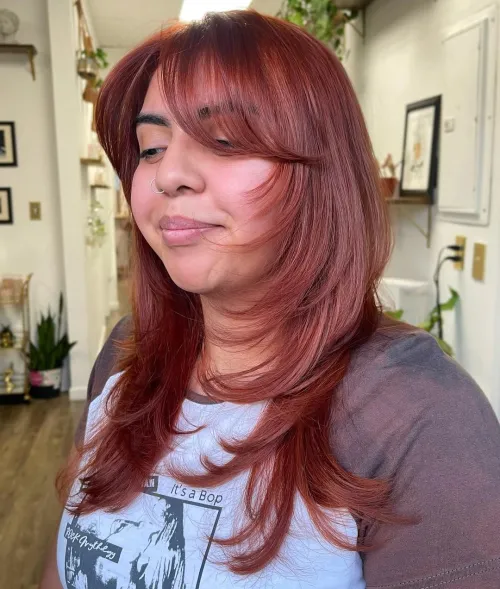
Wispy layers are delicate and soft, perfect for adding a touch of lightness and movement to your hair. These layers are typically cut with thinning shears to create a feathery effect, making them ideal for fine or medium hair.
How to Style:
Use a lightweight mousse or texturizing spray to add volume and define the wisps. Blow-dry your hair with a round brush to create soft curves, or let your hair air dry for a more natural look. Avoid heavy products that can weigh down the layers.
2. Textured Layers

Textured layers add dimension and volume, giving your hair a fuller, more dynamic appearance. This style works well on all hair types, but it’s particularly beneficial for adding body to thin or fine hair.
How to Style:
Apply a texturizing spray or sea salt spray to damp hair and scrunch it as you blow-dry for a tousled, beachy look. For a sleeker style, use a flat iron to create soft waves or curls, enhancing the texture.
3. Flippy Layers

Flippy layers are all about fun and movement. These layers are cut to flip outwards, giving your hair a playful, retro vibe. They’re great for adding bounce and lift, especially to shoulder-length or shorter haircuts.
How to Style:
Blow-dry your hair with a round brush, directing the ends outwards to create the flip. A lightweight hairspray can help hold the shape without making your hair stiff. This style works well with both straight and slightly wavy hair.
4. Choppy Layers
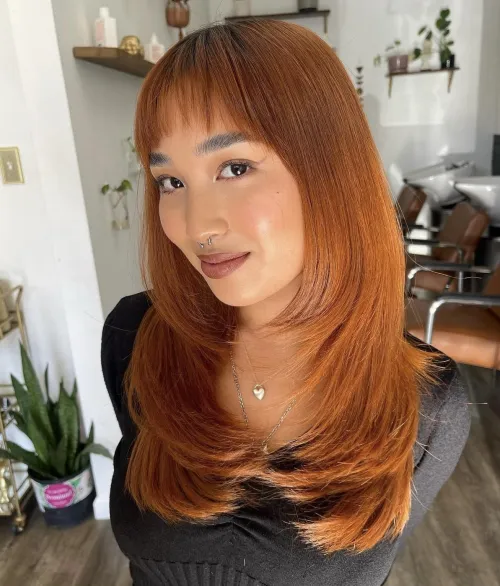
Choppy layers are edgy and modern, offering a more structured, piecey look. This type of layering adds texture and definition, making it a popular choice for those who want a bold, statement hairstyle.
How to Style:
Use a texturizing cream or pomade to define the choppy layers. Run your fingers through your hair to separate the pieces and create a messy, tousled look. You can also use a flat iron to create slight bends in the layers for added dimension.
5. Feathered Layers
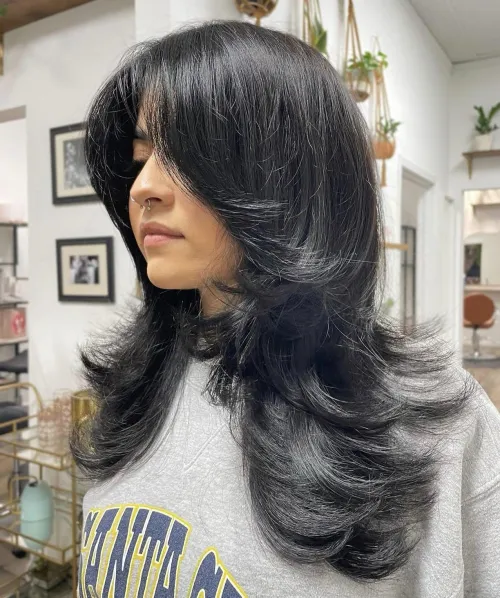
Feathered layers are a classic choice that creates a soft, flowing effect. These layers are cut to blend seamlessly, giving your hair a feathered, airy appearance. Feathered layers work well with medium to long hair lengths.
How to Style:
Blow-dry your hair with a large round brush, focusing on creating smooth, curved ends. A smoothing serum can help eliminate frizz and enhance the feathered texture. This style looks beautiful when paired with soft waves or curls.
6. Short vs Long Layers

Short layers are typically cut closer to the scalp, adding volume and lift, while long layers create a more gradual, flowing effect. The choice between short and long layers depends on your hair type, face shape, and desired style.
How to Style:
For short layers, use a volumizing mousse to lift the roots and create fullness. Long layers can be styled with a curling iron or wand to add soft waves. Both short and long layers benefit from regular trims to maintain their shape.
7. Invisible Layers
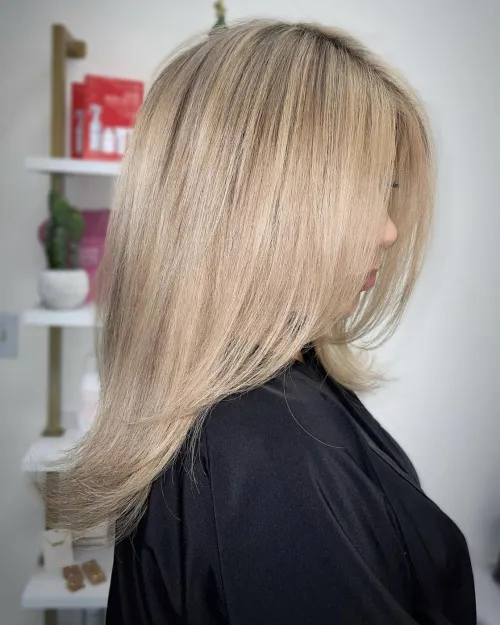
Invisible layers are subtle and blend seamlessly into the hair, creating a natural, barely-there layering effect. This technique is perfect for adding movement without sacrificing length or thickness.
How to Style:
Invisible layers are low-maintenance and can be styled with minimal effort. Use a lightweight styling cream to add shine and smoothness. You can also add loose waves or curls with a curling wand for a bit of extra texture.
8. Face-Framing Layers

Face-framing layers are designed to highlight your facial features, adding softness and dimension around the face. These layers can be customized to suit any face shape and are often paired with bangs or curtain bangs.
How to Style:
Blow-dry the layers around your face with a round brush, curling them inwards to frame your features. For a more casual look, use a flat iron to create loose, natural waves. A bit of shine serum can enhance the framing effect.
9. U vs V Cut Layers
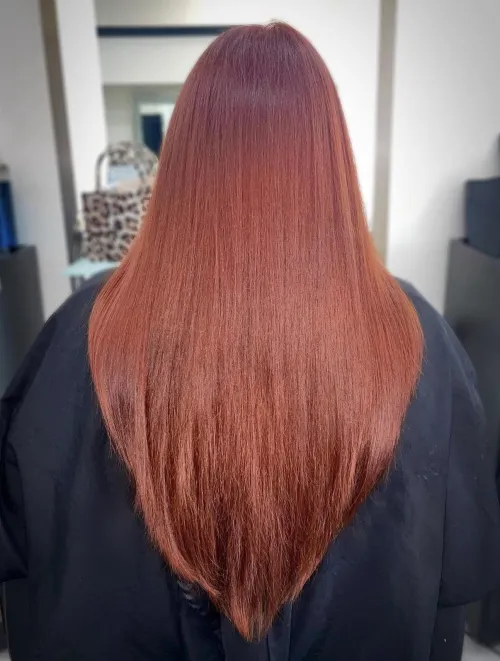
U-cut layers create a soft, rounded shape at the back, while V-cut layers form a more pointed, angular shape. Both cuts can add interest and definition to your hairstyle, depending on your personal preference.
How to Style:
For U-cut layers, style with soft waves or curls to enhance the rounded shape. V-cut layers look striking when styled straight or with defined curls to accentuate the angular lines. Use a shine spray to highlight the shape of the cut.
10. Layers for Curly Hair
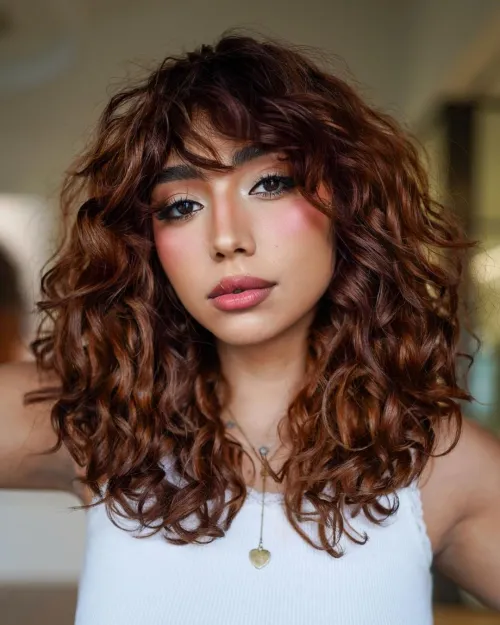
Layers for curly hair are essential for adding shape, reducing bulk, and enhancing your natural curl pattern. These layers help define and separate the curls, giving your hair a more structured and polished look.
How to Style:
Apply a curl-enhancing cream or gel to damp hair, then scrunch your curls to define them. Air-drying or diffusing will help maintain the curl pattern without causing frizz. Regular trims are crucial to keep your curly layers looking their best.
Conclusion
Layered haircuts offer endless versatility and can be tailored to suit any hair type, length, or style preference. By understanding the different types of layers and how to style them, you can achieve a look that’s uniquely yours. Whether you’re going for soft and subtle or bold and edgy, these layering techniques will help you create a hairstyle that turns heads.

